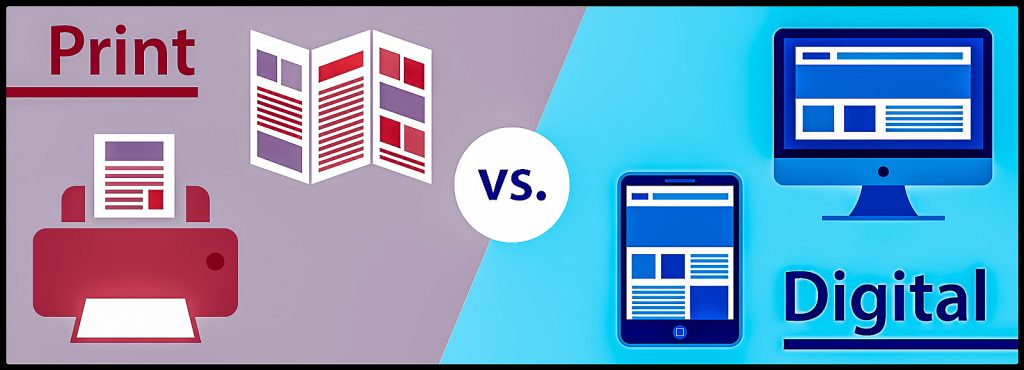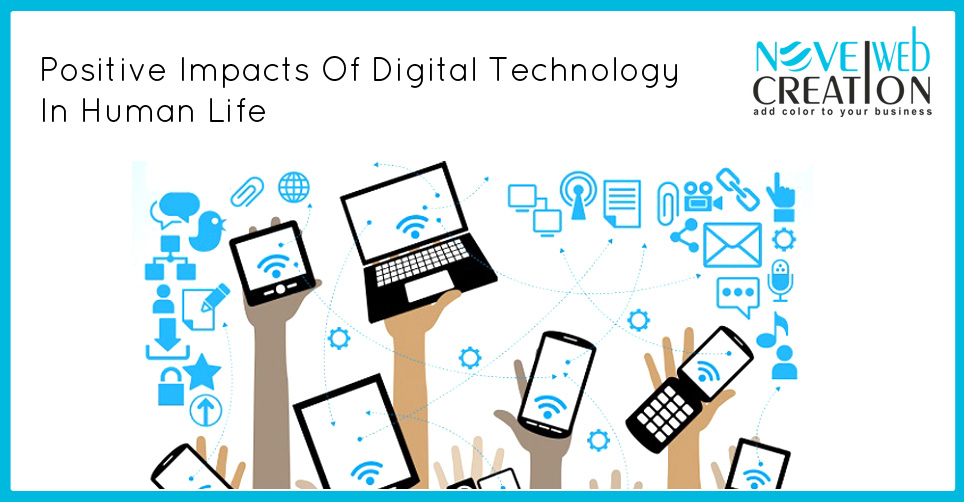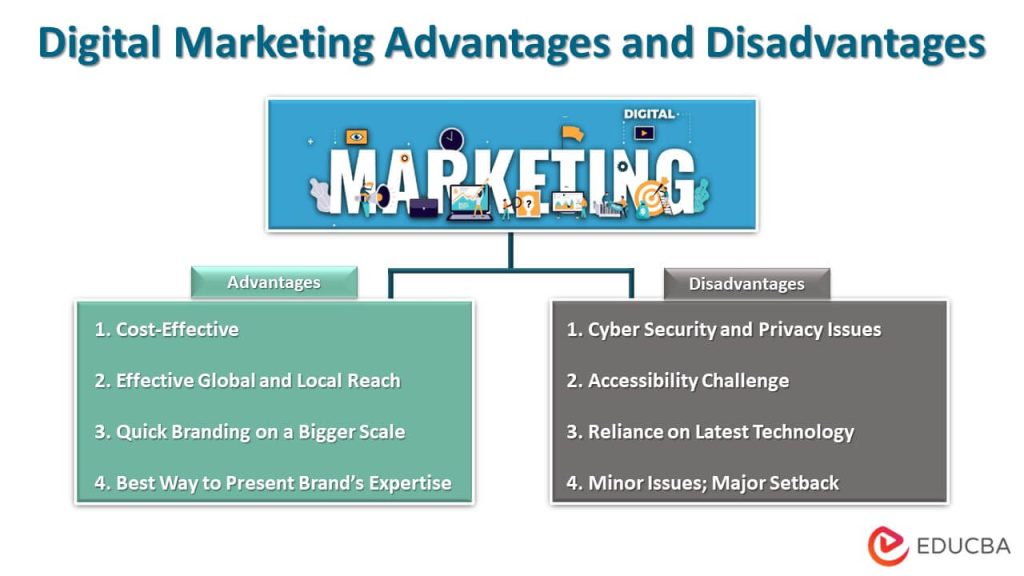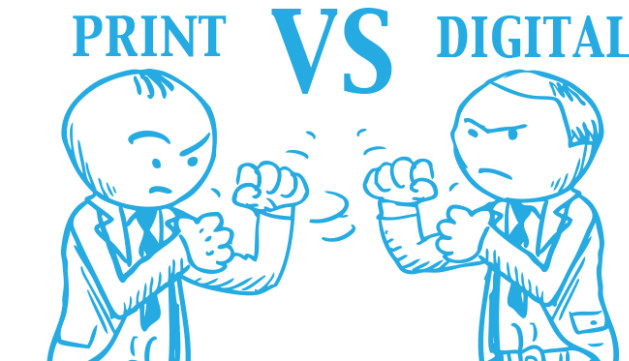In a world where technology is rapidly advancing, it’s easy to feel overwhelmed by the constant push towards digitalization. While there are undeniable benefits to the convenience of digital media, many people still prefer the tangible experience of print. So how do we find the perfect balance between the two?
The answer isn’t black and white – it’s all about finding what works best for you. Both print and digital media have their own unique advantages and disadvantages, and it’s up to each individual to decide which one suits their needs best.
In this article, we’ll explore the pros and cons of both print and digital media, and provide tips on how to find the perfect balance in a digital age. Whether you’re a die-hard print enthusiast or a tech-savvy digital native, there’s something here for everyone.
Define Print And Digital Media

Print versus digital media has been a topic of discussion for quite some time now, especially since the rise of digital technologies. The use of print media has been around for centuries, whereas digital media is a relatively recent phenomenon that has completely transformed our daily lives. While digital technologies have made communication and access to information more convenient, studies have found that print media still holds unique benefits that digital media cannot offer.
Recent studies conducted by major universities such as Stanford and Carnegie Mellon have revealed that print media receives a higher level of engagement from readers than digital media. Print books, newspapers, and magazines are still preferred over digital versions by a majority of readers, especially college professors and students. For example, college students retain more information when reading from print books compared to digital ones. Additionally, print ads tend to be more memorable and stand out more than their digital counterparts.
While digital media holds its own advantages such as real-time updates, the ability to reach a larger target audience, and target demographic, it also has its disadvantages. The overuse of digital screens has been linked to increased screen time and negative impacts on mental health, especially in children aged 2 to 6 years old. Artificial intelligence and search engines can also create a filter bubble, limiting exposure to different perspectives and new ideas.
The impact of digital technologies on daily lives and consumer behavior cannot be ignored. There is no denying that we are all heavily reliant on our phones and other digital devices. Business owners have had to adapt by incorporating digital strategies such as digital advertising, business listings, and social media marketing to reach their target audience. However, finding the perfect balance between print and digital marketing strategies is crucial for success. Print materials such as business cards and brochures are still relevant and can provide a personal touch that digital communication lacks. Offset printing also offers higher quality and durability to printed materials.
Impact Of Digital Technologies On Daily Lives

The impact of digital technologies on daily lives has been significant over the past decade. From work to education, health to entertainment, communication to personal development, digital technologies have become an essential part of people’s daily routines.
One of the primary ways digital technologies have impacted individuals on a daily basis is through work. With the rise of remote work and virtual offices, the use of digital technologies such as video conferencing, project management software, and cloud storage has become increasingly important. As noted by a technology developer, “digital technologies have transformed the way we work, making it more efficient and flexible.”
In the realm of education, digital technologies have also had a significant impact. With the shift to online learning, students and teachers alike have had to adapt to using digital technologies such as learning management systems, video conferencing, and online resources. According to a college professor, “Digital technologies have become critical tools for both teaching and learning. They allow students to access a wealth of information and collaborate with peers, regardless of location.”
In terms of health, digital technologies have allowed individuals to monitor their physical and mental well-being. Wearable devices such as Fitbits and smartwatches track activity levels and heart rate, while mental health apps provide resources for anxiety and stress management. A major university notes that “digital technologies have the potential to revolutionize healthcare, making it more accessible and personalized.”
Digital technologies also play a significant role in entertainment and communication. From streaming services such as Netflix to social media platforms like Facebook and Twitter, individuals use digital technologies to connect with others and access entertainment on a daily basis. As noted by a consumer communication expert, “Digital technologies have opened up new avenues for communication and entertainment. They offer endless possibilities for socializing and exploring new forms of content.”
Finally, digital technologies play a role in personal development. Online courses, blogs, and self-help apps provide individuals with resources for self-improvement. As noted by a business leader, “Digital technologies provide individuals with the tools to learn and grow on their own terms. They allow us to access information and resources that were once only available to select groups.”
Pros And Cons Of Print Versus Digital
In a world where digital technologies are becoming increasingly prevalent, there is an ongoing debate about the merits of print versus digital. Both formats have their distinct advantages and disadvantages depending on the purpose and target audience. In this article, we’ll explore the pros and cons of print versus digital to help you find the perfect balance between the two in this digital age.
Advantages Of Print Materials
Print materials, such as brochures, flyers, and magazines, have several advantages over their digital counterparts. Firstly, print materials are tangible. Customers can hold them, flip through them, and even keep them as a physical reminder of your brand. This is especially important in industries where customers need to physically see and touch a product before making a purchase, such as fashion or home decor.
Secondly, print materials have a higher perceived credibility than digital materials. This is because print materials have been around for centuries, and customers are used to seeing them in physical form. Digital materials, on the other hand, can be easily manipulated and may not be as trustworthy to customers.
Lastly, print materials can provide higher engagement levels than digital materials. This is because customers are more likely to spend time reading a physical brochure or magazine than they are scrolling through a website or social media feed. Print materials can also be used as a conversation starter, as customers may ask questions or make comments about the content they are reading.
Disadvantages Of Print Materials
Print materials have been the traditional medium for businesses and organizations to communicate with their target audiences. However, today, digital alternatives have gained popularity due to various advantages they offer over print materials. Here are some of the disadvantages of print materials that make them less attractive compared to digital alternatives:
Constraints: Print materials are limited in terms of options for materials, which restricts the creativity of businesses. Unlike digital alternatives, print materials cannot incorporate multimedia elements such as videos, animations, or interactive elements. This can limit the effectiveness of communications and make it harder to engage audiences.
Lower color fidelity: Print materials have lower color fidelity compared to digital alternatives. This can lead to inaccurate color reproduction, which can negatively impact the quality of the printed material. Moreover, printing exact brand colors can be challenging, leading to variations in the final output.
Higher costs: Printing large-volume orders can result in expensive setup costs, making it less cost-efficient for businesses to produce print materials. These expenses can negatively impact the business’s budget, leading to lesser returns on investment.
Slightly lower quality: Compared to digital alternatives, print materials offer slightly lower quality output. This can result in reduced appeal and effectiveness of print materials used in promoting a brand, product, or service.
Longer timelines: Printing jobs often take a longer time to complete, especially for large-volume orders. This can result in delayed or missed deadlines, leading to ineffective outcomes for businesses.
All these factors can significantly impact businesses, as they aim to engage their target demographic effectively. Digital alternatives can offer more versatility, speed, and cost-effectiveness, while addressing the disadvantages of print materials. Businesses should find a balance between the two mediums to ensure the most effective strategy for their desired outcomes.
Advantages Of Digital Advertising And Strategies
Businesses are finding that digital advertising and marketing strategies provide various benefits compared to traditional print advertising in the digital age. One of the most significant benefits is the ease and efficiency of targeting audiences that digital platforms provide. With digital marketing, businesses have the ability to select multiple locations and demographics, allowing them to reach their target audience with precision.
Another advantage of digital marketing is the flexibility it offers. Unlike print, digital marketing campaigns can be revised or updated at any time, giving businesses the ability to make adjustments based on immediate feedback. This allows them to respond to changes in consumer behavior or communication quickly, which can lead to increased engagement and conversions for the business.
In addition to flexibility, digital advertising is also cost-effective. With the ability to reach more people in a shorter amount of time, businesses can save money on print production costs and distribution. Moreover, digital advertising campaigns can be personalized based on consumer behavior and communication, making them more effective at reaching target audiences.
While digital advertising strategies can offer a more extensive reach, print publications provide greater credibility and effective messaging. Print advertising remains a trusted method of communication, particularly among older or more traditional target demographics. Additionally, print materials can have a longer lifespan than digital versions and remain in the possession of the audience for an extended period of time.
Disadvantages Of Digital Advertising And Strategies

While digital advertising offers considerable advantages over traditional print ads, it is not without its challenges and downsides. One significant downside of digital advertising is the highly competitive and oversaturated market, where businesses face stiff competition to be noticed by their target audience. As a result, it can be challenging for businesses to stand out from their competitors and generate the desired results.
Moreover, digital advertising can be negatively impacted by ad blockers, user privacy concerns, and changing algorithms. Ad blockers prevent users from seeing digital ads, while user privacy concerns have led to stricter regulations regarding the use of consumer data for targeted advertising. Furthermore, changing algorithms on social media platforms can significantly impact the reach and effectiveness of digital marketing campaigns.
The cost of digital advertising is another potential downside. While digital advertising can be cost-effective compared to traditional print ads, the need for ongoing optimization and customization can quickly add up. Targeting specific demographics and testing different approaches to maximize the efficiency of digital campaigns may require continuous investment to remain relevant and successful.
Finally, digital advertising requires a dynamic and strategic approach to staying ahead of the game. With the evolution of consumer behavior and the changing trends in digital technologies, businesses need to remain vigilant and adapt their digital marketing strategies accordingly. Failing to do so could result in campaigns that are irrelevant or ineffective.
Target Audience: Who Should Use Print Or Digital?
When it comes to deciding whether to use print or digital media, understanding your target audience is crucial. Both mediums have their benefits and drawbacks, and choosing the right one can significantly impact audience engagement and overall success.
Audience engagement and preference should be the primary factors in deciding which medium to use. For example, if your target audience is more likely to prefer print materials, such as business cards or brochures, then investing in high-quality printed materials may be worth it. On the other hand, if your target audience primarily uses digital platforms, such as social media or search engines, then digital advertising may be the best approach.
Age range and demographics play a significant role in audience preference for print versus digital media. For instance, older demographics tend to prefer print media, while younger audiences are more comfortable with digital media. However, this is not always the case, and each industry must analyze its specific target demographic to determine which medium to use.
Industries that benefit from using print media based on their target audience include luxury brands, colleges, and universities, and businesses targeting an older demographic. For instance, luxury brands prefer print materials for its high-quality look and feel. Colleges and universities often use print media for their promotional materials such as brochures, newsletters, and catalogs that students can physically hold on to. Local businesses that target an older demographic may benefit from print materials since they are less likely to use digital media.
In contrast, industries that benefit from using digital media based on their target audience are tech companies, fashion brands, and businesses targeting a younger demographic. Tech companies leverage digital media to promote their products to tech-savvy audiences who use search engines and social media platforms. Fashion brands also benefit from digital media to showcase their products on digital platforms, video-sharing sites, and social media. Businesses targeting a younger demographic, such as college students, are more likely to connect through digital media channels.
How To Create A Perfect Balance Between Print And Digital Marketing Strategies
When it comes to creating a perfect balance between print and digital marketing strategies, it’s essential to start by analyzing your target audience and the type of messaging you want to convey. Understanding your audience’s preferences is key to ensuring that your marketing efforts are received positively and result in high engagement.
Once you have a clear understanding of your target demographic, it’s important to assess the market you’re in. Take a close look at similar businesses within your industry to see what marketing strategies have worked and what hasn’t. This can give you valuable insights on where to focus your efforts and which channels to prioritize.
When weighing the pros and cons of print and digital advertising, consider the impact and flexibility of each approach. Print advertising can provide a tangible and credible presence in print publications that can build a strong rapport with readership. However, digital advertising offers unmatched feedback and data analysis that can be used to adjust and strengthen your strategy.
To create a powerful combination of print and digital marketing strategies, consider seeking out an established print publication to provide tried and true credibility and rapport with their readers. By embracing the strengths and advantages of each medium, you can create a comprehensive marketing plan that provides a seamless and compelling experience for your target audience.
Conclusion

In conclusion, finding the perfect balance between print and digital in today’s digital age is crucial for business success. With so many digital technologies at our fingertips, it’s easy to become consumed by screen time and forget the importance and value of print materials. However, it’s also important not to dismiss digital marketing strategies as they provide invaluable data analysis and feedback that can inform and strengthen your overall marketing plan.
When deciding between print and digital advertising, it’s important to consider your target demographic and the market you’re in. Look at successful businesses within your industry to see what’s worked for them, and don’t be afraid to experiment with a combination of print and digital approaches. By embracing the strengths and advantages of each medium, you can create a well-rounded marketing plan that provides a seamless and compelling experience for your target audience.
Remember, it’s all about finding a balance between the time spent on each platform and focusing on quality over quantity. As technology continues to advance, it’s important to stay informed on the latest trends and consumer behaviors to stay ahead of the game.
So, whether you’re a business owner, college professor, or technology developer, it’s crucial to find a balance between print and digital in your daily life. From business cards to search engine optimization, always consider who your target audience is and how you can communicate with them effectively. By doing so, you’ll be able to create a successful marketing plan that caters to your target demographic and, ultimately, improve your overall quality of life.